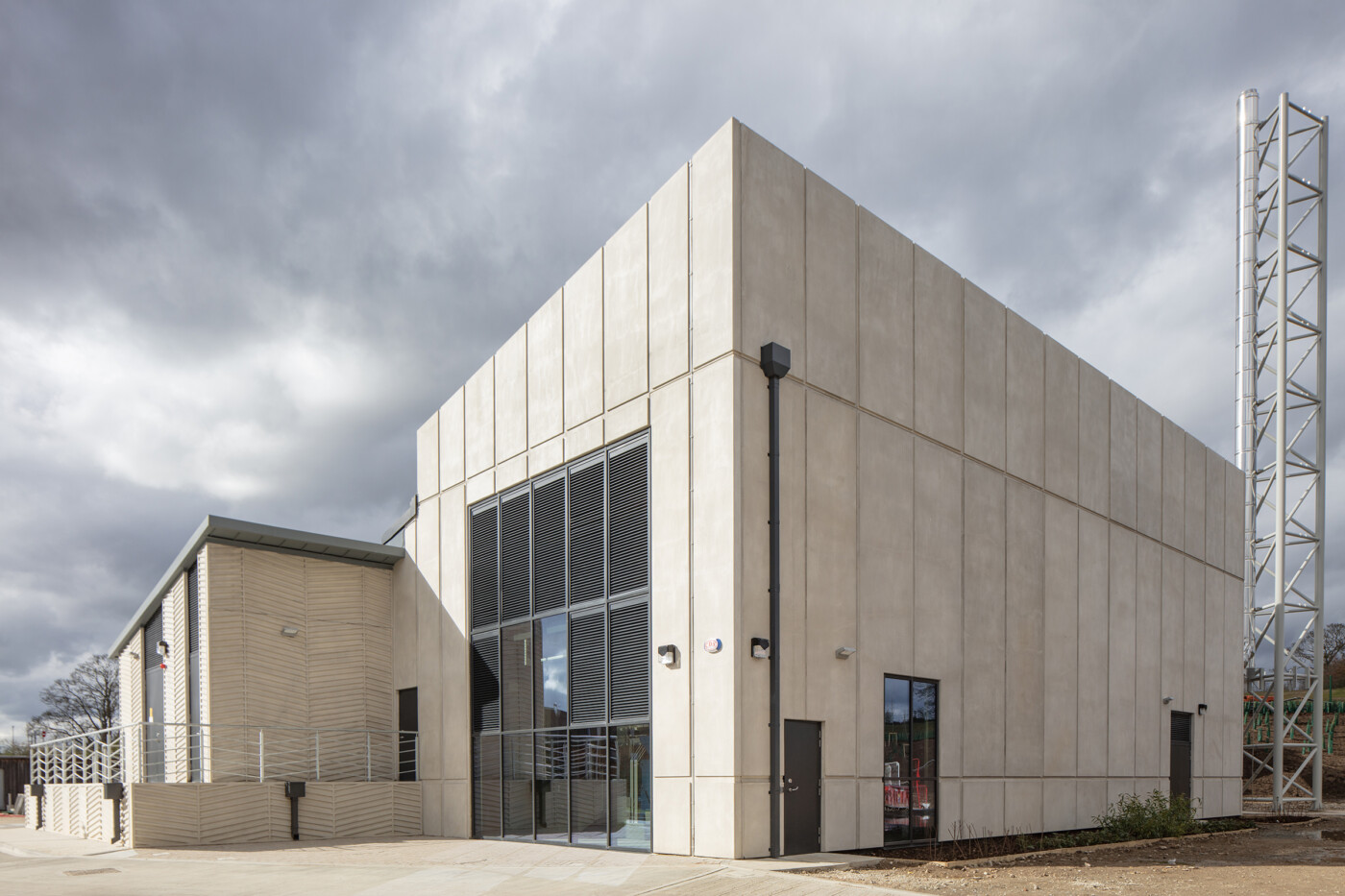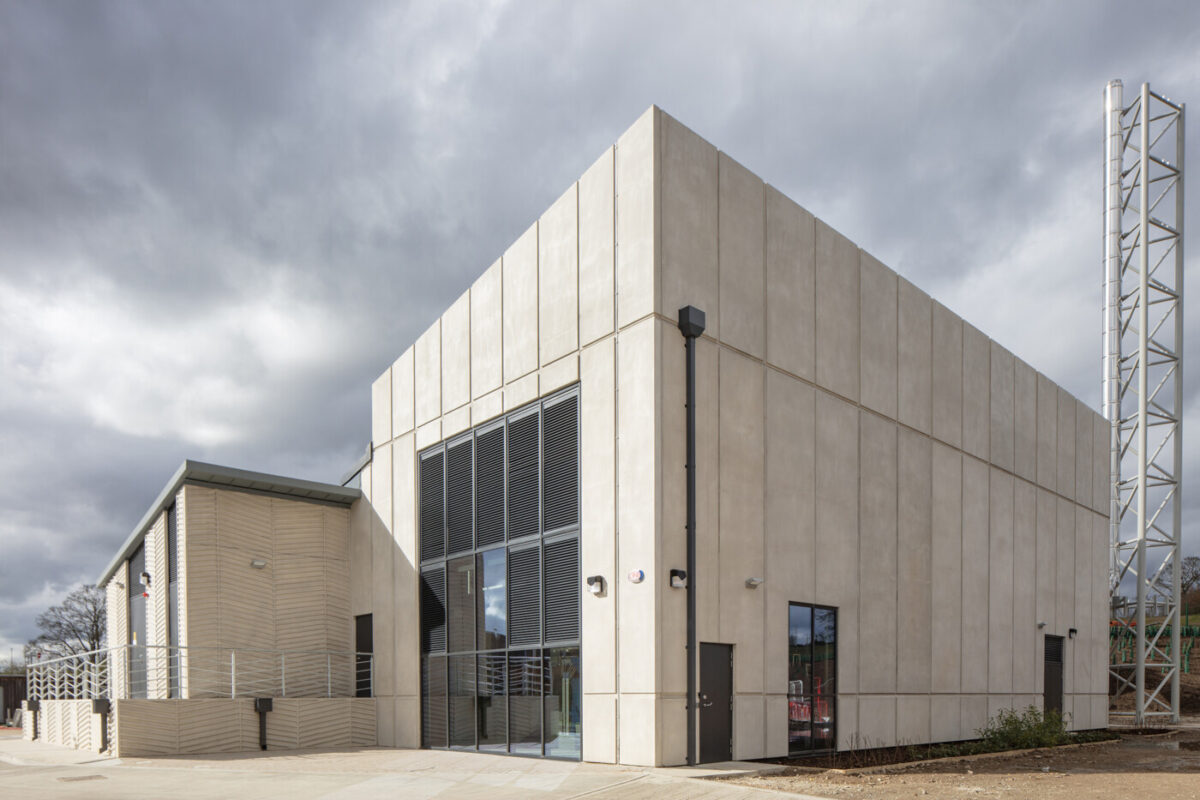The University of York is a true success story within the UK higher education sector. They will celebrate their 60th birthday in 2023 and have powered their way to a consistently high university ranking in the UK and are one of just six post-war universities to have appeared in the world top 100 Rankings.
The New Energy Centre, directly addresses many of the current industry challenges by embracing digital and off-site technologies, driving efficiencies and providing sustainable outcomes.
The DfMA approach offered significant benefits over traditional construction techniques, with a pre-manufactured value in excess of 70%, key benefits included:
- Lower capital expenditure, the cost compared with other modular systems was lower, saving the project £1.3m which ensured it maintained a traditional project cash flow. The precast concrete panels achieved both the structural and aesthetic requirements of the building in one. It reduced the capacity for human error, delays and improved the quality of the build.
- Reduced operating costs, the use of proven materials with a long-life span and the flexibility to modify/adapt internal structures if required, with superior whole-life costing due to the reduced maintenance properties of concrete.
- Flexibility, by providing style and finishes options, supported by a flexible delivery model which allowed the majority of components to be produced off-site.
- Programme, a faster construction programme than traditional, enabling us to achieve a 14-week saving on programme and deliver a watertight structure within 10weeks. The project was handed over 2weeks early.
- Sustainability, the building is highly sustainable, designed and constructed using low-carbon technologies and materials. To- support decarbonisation, providing a 2,000-tonne annual carbon saving. The project provides cleaner energy and is 25% more efficient. Excess energy is used to create thermal energy, efficiently providing heating or cooling for buildings. Reducing reducing harmful pollutants, diversifying the energy supply, and increasing energy infrastructure resilience and security.
- Standardisation, repeatable MMC panels and standardised M&E components to reduce FM costs.
- Health and safety, improvements from reduced trades and risks onsite as well as eliminating the use of significant scaffolding; this removed the risks associated with working at height. Over 150,000 hours were worked accident free with an average of 80 people on-site, this supported the award of a RoSPA ‘Outstanding Achievement’ award.
- Quality, factory quality and off-site inspections and the use of collaborative software supported seamless handover with zero defects.
- Design-optimisation supported sustainable outcomes and decarbonisation, for example, minimising material use at source, by working with suppliers in relation to materials development and testing, i.e. incorporating the use of new sustainable cement and admixtures. The DfMA approach reduced concrete use by 15% and eliminated 300 vehicle movements.
Three Winning Facts:
- The new Energy Centre is an MMC game-changer, the approach generating many tangible benefits, including improved life-cycle costs, a 14-week programme reduction, 25% energy efficiencies, zero defects, reduced waste and safety risks. A collaborative approach and golden digital thread run throughout the project and has ensured all project and diverse stakeholder objectives were achieved, along with exceptional end-user experiences. The project was 100% compliant and has received excellent post occupancy feedback.
- Leaving a lasting legacy, the project has smashed its social value and sustainability targets, with 75% of contracts placed locally, and a further £17m of benefits generated within the local economy. Creating six new sustainable jobs, 3 new apprentices and nine work placements. 99% of waste was recycled, over 50 site visits were supported to ensure construction is positioned as an aspirational career choice; this included many diverse groups. The Energy Centre provides a glimpse of the site-of-the-future, a showcase for best practice, addressing all the Government Playbook themes.
- Collaborative procurement, the use of the YORbuild framework, facilitated a collaborative approach, bringing all stakeholders together early to develop an optimum solution and deliver value-based outcomes. With a clear focus on quality, community and reducing carbon. Modern methods of construction were adopted to protect the programme, improve safety and promote quality. They also helped to diversify the supply chain and reduce risk through a precast-concrete panel solution and by using off-site M&E innovations. Recognised by the Considerate Constructors Scheme with a 45/45 excellent score.


